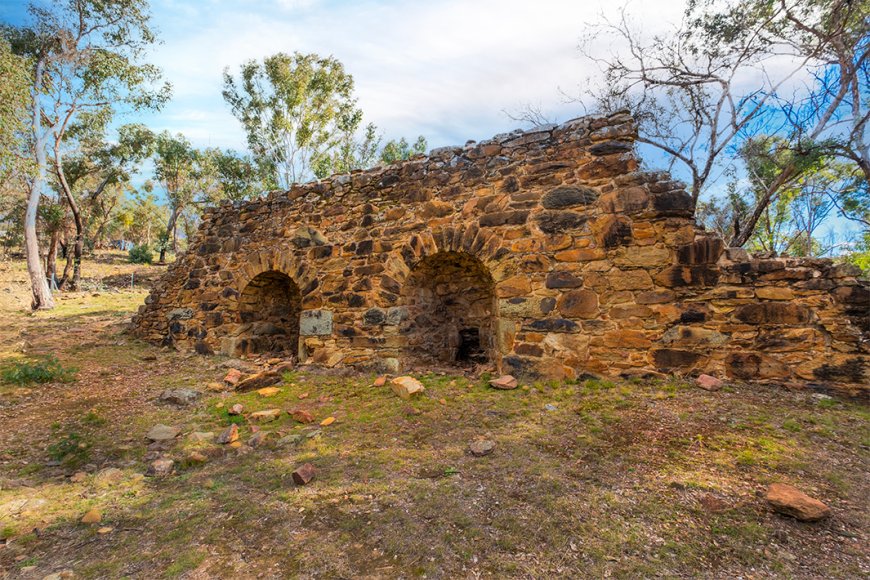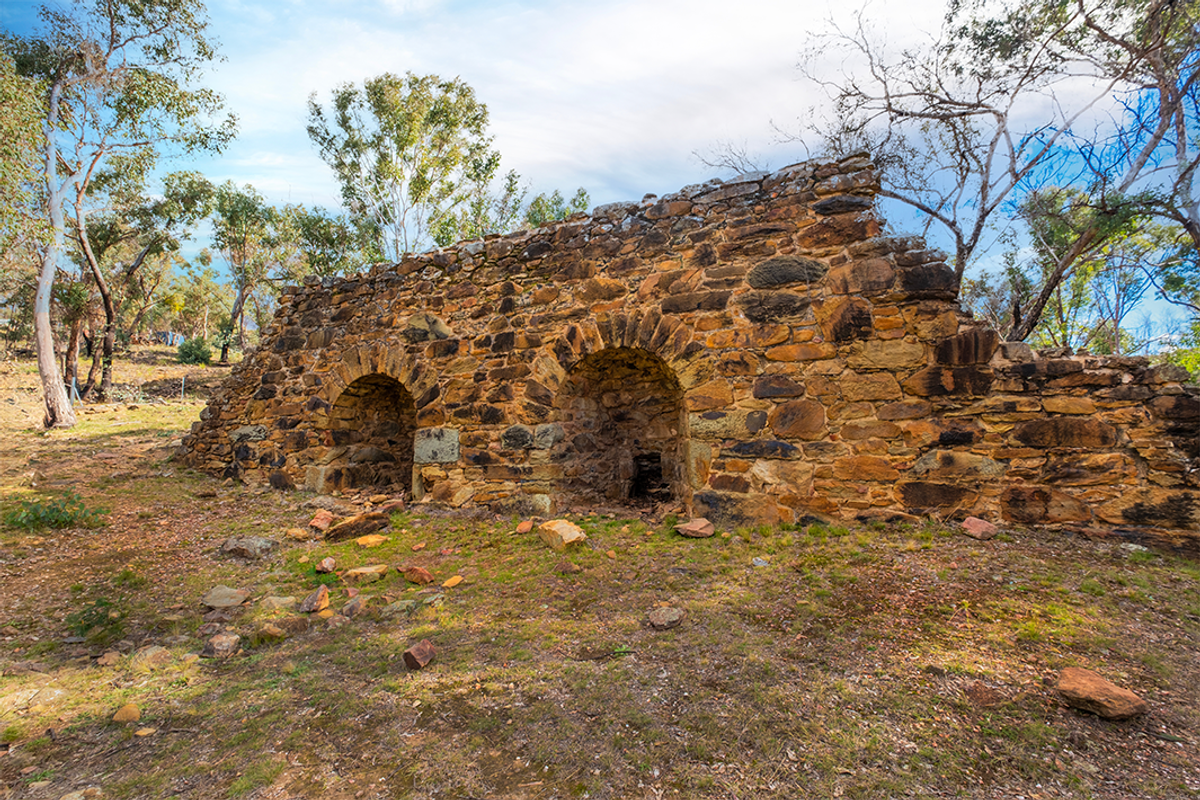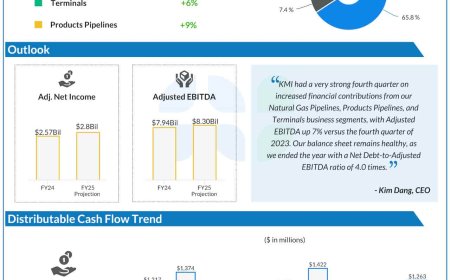Breathing New Life into Australia’s Historic Hill End Gold District
Many resource-rich regions are dotted with historical mines, some of which have since become tourist sites. But not all old mines should remain dormant. In fact, some former producers can serve again as successful working mines.There are numerous benefits to revitalising a historic mine. One is that they have proven resources, with new technologies aiding in expanding those resources even more. Others are that historical data is readily available, and nearby infrastructure makes resuming production straightforward. To find mines with a rich history and more potential, look no further than New South Wales. The town of Hill End is one such place. It made mining history centuries ago and it’s now emerging as a location with more gold to offer. Hill End’s storyGold was discovered in this area in Central-Western New South Wales in 1851 when there was almost nothing there, just a hotel and two stores. Hill End turned into a significant alluvial gold-mining precinct at a location called Tambaroora, where some tens of thousands of Europeans and Chinese worked the gravels. It has been conservatively estimated that the alluvials yielded some 800,000 ounces of fine gold.In October 1872, the Star of Hope Gold Mining Company discovered the Holtermann’s nugget, the largest specimen of reef gold ever found. It weighed 286 kilograms and measured 150 centimetres by 66 centimetres, with an average thickness of 10 centimetres. (It’s not actually a nugget, but a quartz specimen infused with veins of gold. That discovery, plus other active mining operations — including the Hawkins Hill mine, which yielded 435,000 ounces at 309 grams per tonne — caused the population of Hill End to soar, becoming one of the largest inland towns in New South Wales. The entire goldfield region was estimated to be home to 30,000 people at one point.The boom town went bust by 1874, with much of it closing down and the population declining into the hundreds over the next few decades. In the 1920s, mining activity returned briefly to the region.During its heyday, Hill End yielded 50 tonnes of gold. Today, Hill End remains an illustrious region known for its untapped potential.A return to Hill EndOne company believes Hill End’s gold story is far from over. Vertex Minerals (ASX:VTX) is resurrecting operations at the Reward gold mine, part of its Hill End project. Production is scheduled to commence in 2025, with a resource estimated at 485,000 ounces of gold. The company has tenure over 155 square kilometres of land, seven granted exploration licences, one gold lease and 10 mining leases.Vertex’s Hill End project comprises three assets — Reward, Red Hill and Hargraves — with a combined mineral resource of 4.21 million tonnes of gold. The Reward mine alone has an indicated resource of 141,000 tonnes at 15.5 grams per tonne gold for 71,000 ounces of contained gold, and 278,000 tonnes at 17.3 grams per tonne gold for 155,000 ounces of contained gold in the inferred category.According to Roger Jackson, executive chairperson of Vertex, the benefits of working on a well-developed historical mining site are many. Reward has significant underground development with some $25 million already spent on an air intake shaft, a 1 kilometre adit and mine development access to high-grade gold stopes. Reward also has a gravity gold-processing plant that can recover uniquely 92 percent of the gold by simple gravity means. Vertex is in the process of upgrading this plant and adding an ore sorter into the flow sheet with expected exception results. “All the environmental footprint has already been stamped on the location. We understand the geology, we understand the metallurgy,” said Jackson.A modern approach“The Reward mine has the potential to grow to a significant size due to the near-mine potential of further high-grade ore to be drilled and resourced. The Reward resource is only drilled to about 100 metres below the amalgamated adit, so (with) further drilling below this is likely to be fruitful,” added Jackson.Developing and restarting the Reward mine is just part of Vertex’s plans for Hill End, which include reinstalling a refurbished 110,000 tonne per year Gekko gravity gold plant and commencing gold production from existing stockpiles. The company also plans to increase Hill End’s high-grade resource through further exploration and drilling. The company has just purchased its own drill rig so it can maintain a focused, constant, long-term drilling effort to build on the high-grade gold inventory.Current approaches to mining and extraction, meanwhile, can one-up historical processes to be more ecologically aware. The use of gravity separation for processing ore at the Reward mine will lead to high-grade gold with a low-cost process that will be far less environmentally concerning than methods used at most facilities. Gravity technology uses the natural force of gravity to separate valuable minerals from waste material, and minimises the use of harsh chemicals in


Many resource-rich regions are dotted with historical mines, some of which have since become tourist sites. But not all old mines should remain dormant. In fact, some former producers can serve again as successful working mines.
There are numerous benefits to revitalising a historic mine. One is that they have proven resources, with new technologies aiding in expanding those resources even more. Others are that historical data is readily available, and nearby infrastructure makes resuming production straightforward.
To find mines with a rich history and more potential, look no further than New South Wales. The town of Hill End is one such place. It made mining history centuries ago and it’s now emerging as a location with more gold to offer.
Hill End’s story
Gold was discovered in this area in Central-Western New South Wales in 1851 when there was almost nothing there, just a hotel and two stores. Hill End turned into a significant alluvial gold-mining precinct at a location called Tambaroora, where some tens of thousands of Europeans and Chinese worked the gravels.
It has been conservatively estimated that the alluvials yielded some 800,000 ounces of fine gold.
In October 1872, the Star of Hope Gold Mining Company discovered the Holtermann’s nugget, the largest specimen of reef gold ever found. It weighed 286 kilograms and measured 150 centimetres by 66 centimetres, with an average thickness of 10 centimetres. (It’s not actually a nugget, but a quartz specimen infused with veins of gold.
That discovery, plus other active mining operations — including the Hawkins Hill mine, which yielded 435,000 ounces at 309 grams per tonne — caused the population of Hill End to soar, becoming one of the largest inland towns in New South Wales. The entire goldfield region was estimated to be home to 30,000 people at one point.
The boom town went bust by 1874, with much of it closing down and the population declining into the hundreds over the next few decades. In the 1920s, mining activity returned briefly to the region.
During its heyday, Hill End yielded 50 tonnes of gold. Today, Hill End remains an illustrious region known for its untapped potential.
A return to Hill End
One company believes Hill End’s gold story is far from over.
Vertex Minerals (ASX:VTX) is resurrecting operations at the Reward gold mine, part of its Hill End project. Production is scheduled to commence in 2025, with a resource estimated at 485,000 ounces of gold. The company has tenure over 155 square kilometres of land, seven granted exploration licences, one gold lease and 10 mining leases.
Vertex’s Hill End project comprises three assets — Reward, Red Hill and Hargraves — with a combined mineral resource of 4.21 million tonnes of gold. The Reward mine alone has an indicated resource of 141,000 tonnes at 15.5 grams per tonne gold for 71,000 ounces of contained gold, and 278,000 tonnes at 17.3 grams per tonne gold for 155,000 ounces of contained gold in the inferred category.
According to Roger Jackson, executive chairperson of Vertex, the benefits of working on a well-developed historical mining site are many. Reward has significant underground development with some $25 million already spent on an air intake shaft, a 1 kilometre adit and mine development access to high-grade gold stopes. Reward also has a gravity gold-processing plant that can recover uniquely 92 percent of the gold by simple gravity means. Vertex is in the process of upgrading this plant and adding an ore sorter into the flow sheet with expected exception results.
“All the environmental footprint has already been stamped on the location. We understand the geology, we understand the metallurgy,” said Jackson.
A modern approach
“The Reward mine has the potential to grow to a significant size due to the near-mine potential of further high-grade ore to be drilled and resourced. The Reward resource is only drilled to about 100 metres below the amalgamated adit, so (with) further drilling below this is likely to be fruitful,” added Jackson.
Developing and restarting the Reward mine is just part of Vertex’s plans for Hill End, which include reinstalling a refurbished 110,000 tonne per year Gekko gravity gold plant and commencing gold production from existing stockpiles. The company also plans to increase Hill End’s high-grade resource through further exploration and drilling.
The company has just purchased its own drill rig so it can maintain a focused, constant, long-term drilling effort to build on the high-grade gold inventory.
Current approaches to mining and extraction, meanwhile, can one-up historical processes to be more ecologically aware. The use of gravity separation for processing ore at the Reward mine will lead to high-grade gold with a low-cost process that will be far less environmentally concerning than methods used at most facilities. Gravity technology uses the natural force of gravity to separate valuable minerals from waste material, and minimises the use of harsh chemicals in the process. This method is particularly effective for gold extraction in unique gold ore like the Reward.
Investor takeaway
Revitalising historic mining facilities comes with many benefits for companies and their investors. These former producers are more straightforward to develop due to existing resources and infrastructure, and can offer a more cost-effective mine restart and significant potential for near mine resource expansion through exploration.
This INNSpired article is sponsored by Vertex Minerals (ASX:VTX). This INNSpired article provides information which was sourced by the Investing News Network (INN) and approved by Vertex Minerals in order to help investors learn more about the company. Vertex Minerals is a client of INN. The company’s campaign fees pay for INN to create and update this INNSpired article.
This INNSpired article was written according to INN editorial standards to educate investors.
INN does not provide investment advice and the information on this profile should not be considered a recommendation to buy or sell any security. INN does not endorse or recommend the business, products, services or securities of any company profiled.
The information contained here is for information purposes only and is not to be construed as an offer or solicitation for the sale or purchase of securities. Readers should conduct their own research for all information publicly available concerning the company. Prior to making any investment decision, it is recommended that readers consult directly with Vertex Minerals and seek advice from a qualified investment advisor.











































